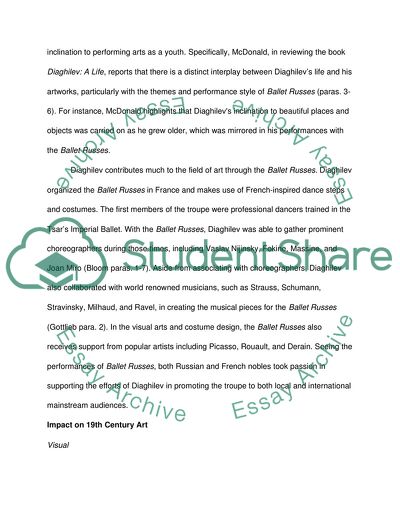Cite this document
(Sergei Diaghilev, Ballet Russes, and 19th Century Art Report Example | Topics and Well Written Essays - 1250 words, n.d.)
Sergei Diaghilev, Ballet Russes, and 19th Century Art Report Example | Topics and Well Written Essays - 1250 words. https://studentshare.org/performing-arts/1788063-19th-century-art
Sergei Diaghilev, Ballet Russes, and 19th Century Art Report Example | Topics and Well Written Essays - 1250 words. https://studentshare.org/performing-arts/1788063-19th-century-art
(Sergei Diaghilev, Ballet Russes, and 19th Century Art Report Example | Topics and Well Written Essays - 1250 Words)
Sergei Diaghilev, Ballet Russes, and 19th Century Art Report Example | Topics and Well Written Essays - 1250 Words. https://studentshare.org/performing-arts/1788063-19th-century-art.
Sergei Diaghilev, Ballet Russes, and 19th Century Art Report Example | Topics and Well Written Essays - 1250 Words. https://studentshare.org/performing-arts/1788063-19th-century-art.
“Sergei Diaghilev, Ballet Russes, and 19th Century Art Report Example | Topics and Well Written Essays - 1250 Words”. https://studentshare.org/performing-arts/1788063-19th-century-art.


